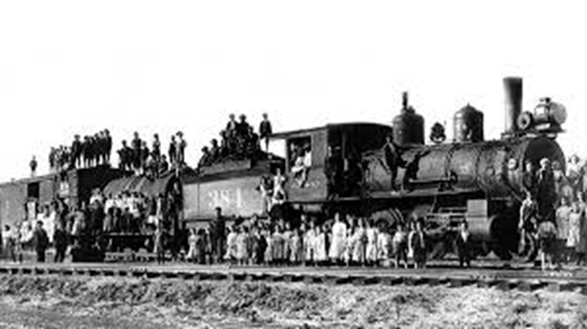
To listen to today’s reflection as a podcast, click here
New York City has always been a harrowing place to live.
During the 1850s – a long time before the arrival of subways and skyscrapers – the city was deeply unsettled. As depicted in Martin Scorsese’s 2002 feature film Gangs of New York, the streets roiled with conflicts between rich and poor, Blacks and Whites, and European immigrants and “real Americans” who claimed Manhattan as their birthright.
In that unstable environment, children were especially vulnerable.
Demographers estimate that in 1854 there were as many as 34,000 homeless boys and girls.
Some children had been abandoned because their parents couldn’t feed them. Others were orphaned when their mothers and fathers perished in epidemics of typhoid or influenza. Immigrant families often found themselves bereft of support because no extended family lived nearby, and effective social agencies were still years away.
A number of children ended up in orphanages. Such institutions typically housed as many as 2,000 kids. Individualized care was unrealistic.
Life on the streets was worse. Boys trapped and ate rats. They formed gangs to protect themselves from violence. Girls sometimes aligned themselves with prostitutes, becoming “panel thieves.” While a customer was otherwise occupied in an adjoining room, a girl with small hands could slide a panel in the wall and reach into the pockets of his discarded pants. Bar owners built stairsteps to their counters so kids could order alcohol.
It was a social catastrophe on an epic scale. The stories of most of these young lives were going to end badly.
What could be done?
Local churches kept a safe distance. Street urchins might have been welcomed if they routinely took baths and changed clothes, but that wasn’t going to happen.
A 26-year-old Presbyterian minister named Charles Loring Brace embraced a different approach. He took his ministry to the streets and befriended the kids. He founded the Children’s Aid Society, a cohort of like-minded individuals who weren’t afraid to think outside the box for God’s sake.
What if some of New York City’s abandoned children could start life over again somewhere else – with new families, new surroundings, new opportunities?
For the better part of a year, the Society relocated boys and girls to farms in nearby Connecticut and Pennsylvania. Then, in September 1854, they took a crazy risk. They rented a train.
A group of 46 children (ages 7 to 15) were invited to jump aboard and head “way out west,” all the way to Dowagiac, Michigan. By the end of one week, all 46 kids had been welcomed into the homes of local residents.
The Orphan Train, as it was later called, was considered such a successful gamble that another train full of kids went to another town. Then came another. And another.
Between 1854 and 1929, orphan trains transported almost a quarter million children from crowded Eastern cities to various Midwestern communities. Brace’s novel idea became the foundation of the modern foster care system.
Now, almost a century later, the internet teems with first person accounts of what it was like to leave life on the streets and journey to a new home. Grainy photos abound. The world is finally beginning to grasp the enormity of this mission of mercy.
Not every story had a happy ending, of course. Critics are quick to point out that some of the children were exploited as indentured servants by Midwestern farmers.
Researchers, however, have concluded that approximately 80% of the children experienced positive outcomes. We know that three of them grew up to become state governors. Others became teachers, doctors, pastors, missionaries, lawyers, judges, and mayors – not to mention mothers, fathers, friends, and neighbors.
The stories of those children changed. They were given the gift of a better tomorrow. All because a 26-year-old didn’t stand on the sidelines wringing his hands.
Are you watching an unfolding crisis and find yourself wondering who is going to step up and do something?
You might gather a team of like-minded allies who share your concerns. Pray. Think about taking some crazy risks. And pray some more.
Keep asking: Who, with God’s grace and power, is going to do whatever it takes to change someone else’s story?
Then consider the very real possibility that you are the answer to your own question.
